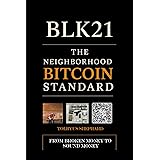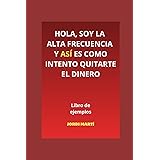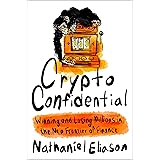Unlocking Potential: Top Cryptocurrency Investments for 2021 and Beyond
For many seasoned investors, the year 2020 presented an unprecedented surge in digital asset markets, echoing the speculative fervor reminiscent of the 2017 boom. Imagine, if you will, the sheer velocity with which some decentralized networks gained mainstream traction, captivating both institutional players and retail enthusiasts alike. Indeed, the cryptocurrency landscape, as discussed in the accompanying video, transitioned from a niche curiosity to a significant component of global finance following the stock market corrections in early 2020. This unique market, while undeniably volatile, has consistently demonstrated its capacity for substantial returns, often appealing to those with a strategic approach and a discerning eye for technological innovation. This article will delve deeper into some of the most compelling digital assets, offering an expert perspective on their underlying utility and potential trajectory for 2021 and future growth.
The journey into crypto can be daunting, yet platforms like Coinbase have significantly lowered the barrier to entry, simplifying the acquisition of these groundbreaking assets. As the digital economy evolves, understanding the core tenets of these emerging technologies becomes paramount. We will explore the technical nuances and market positioning of several key cryptocurrencies, providing insights that extend beyond superficial price action to their fundamental value propositions. Consequently, a comprehensive understanding of these projects can empower investors to make informed decisions within this dynamic financial frontier.
Bitcoin (BTC): The Digital Gold Standard for Cryptocurrency Investment
Bitcoin, the progenitor of the cryptocurrency movement, remains the cornerstone of virtually every digital asset portfolio. Its status as a decentralized, immutable ledger system, free from the dictates of any single government or entity, underpins its enduring appeal. Furthermore, a critical aspect of Bitcoin’s tokenomics is its finite supply; only 21 million BTC can ever be mined. Currently, approximately 18.5 million Bitcoins are in circulation, meaning that the scarcity mechanism is rapidly approaching its theoretical limit. This inherent scarcity, a fundamental principle of economics, suggests a potential for significant long-term value appreciation as demand escalates against a fixed supply.
Consider a hypothetical scenario: if a luxury good, limited to a production run of just 21 units globally, were to experience exponential demand, its market value would inevitably skyrocket. Bitcoin operates on a similar principle. Once the 21 million threshold is reached, new supply ceases, leaving only existing holders to determine its market price based on secondary transactions. This dynamic contrasts sharply with traditional fiat currencies, which are susceptible to inflationary pressures from central bank monetary policies. Consequently, Bitcoin is increasingly viewed as a hedge against currency devaluation and economic instability. Its primary use cases currently encompass value storage, secure peer-to-peer transfers, and increasingly, as a payment rail for various merchants and services. At the time of the video’s creation, Bitcoin was trading around $17,980, having previously reached an all-time high near $19,397 in 2017. Its resurgence towards these historic levels underscores its enduring market strength and potential for further growth into 2021 and beyond.
Ethereum (ETH): Powering the Decentralized Web
Beyond simple value transfer, Ethereum represents a paradigm shift in decentralized computing, serving as the foundational layer for an expansive ecosystem of decentralized applications (DApps) and smart contracts. Unlike Bitcoin, which primarily functions as a digital store of value, Ethereum is a programmable blockchain. This distinction allows developers to build intricate, self-executing agreements and applications directly onto its network without the need for intermediaries. Imagine if every financial service, gaming platform, or social network could operate autonomously, governed by code rather than centralized corporations; this is the vision Ethereum facilitates.
The rise of decentralized finance (DeFi) is intrinsically linked to Ethereum’s capabilities. DeFi, a burgeoning sector, leverages smart contracts to replicate traditional financial services—lending, borrowing, insurance, and exchanges—in a transparent, permissionless manner. While Ethereum’s utility is undeniable, it has faced challenges related to network congestion and escalating transaction fees, occasionally reaching upwards of $100 for a single transfer during peak times, as highlighted in the video. However, ongoing upgrades, such as the transition to Ethereum 2.0 (Serenity), aim to address these scalability issues through mechanisms like sharding and proof-of-stake, promising enhanced throughput and reduced costs. With its all-time high around $1300 and a trading price of approximately $475.37 at the video’s recording, Ethereum presents significant upside potential as the backbone of the decentralized internet.
Uniswap (UNI): The Decentralized Exchange Revolution
Uniswap stands as a pivotal innovation within the DeFi landscape, representing a fully decentralized exchange (DEX) built on the Ethereum network. Its primary function is to enable the seamless, peer-to-peer swapping of ERC-20 tokens—any digital asset created on the Ethereum blockchain. Unlike traditional centralized exchanges, which require users to deposit funds and rely on an order book matching buyers and sellers, Uniswap employs an automated market maker (AMM) model. This sophisticated mechanism utilizes liquidity pools and mathematical algorithms to determine asset prices and execute trades.
The profound utility of Uniswap lies in its commitment to being a “public good,” eliminating platform fees and intermediaries from the trading process. Users interact directly with smart contracts, ensuring transparency and reducing counterparty risk. Over the past year, Uniswap has witnessed an astronomical surge in trading volume and user adoption, catalyzed by the explosive growth of new ERC-20 tokens and DeFi protocols. The introduction of its native UNI token further solidifies its ecosystem, potentially granting governance rights to holders and shaping the future direction of the platform. Although a relatively new entrant, launching in September, Uniswap reached a high of $6.89 and was trading at $3.78 when the video was made, demonstrating robust early performance. Its model is often compared to centralized exchange tokens like Binance Coin (BNB), suggesting a similar potential for value accretion as its utility and user base expand.
Chainlink (LINK): Connecting Smart Contracts to the Real World
Chainlink addresses a fundamental limitation of smart contracts: their inability to securely access data from external, off-chain sources. While smart contracts excel at executing logic on the blockchain, they operate in a deterministic, isolated environment. To perform real-world functions—such as settling an insurance claim based on weather data or executing a supply chain agreement contingent on logistics updates—they require reliable inputs from outside the blockchain. This critical need is met by Chainlink’s decentralized oracle network.
Chainlink effectively acts as a secure bridge, or “middleware,” between smart contracts and external data providers, APIs, and payment systems. Decentralized oracles are crucial because they ensure that the data fed into smart contracts is tamper-proof and accurate, preventing a single point of failure that could compromise the contract’s integrity. Imagine if a smart contract for a sports bet needed the final score of a game; Chainlink would securely retrieve and verify that score from multiple independent sources. Its technology is increasingly being integrated across various industries, from DeFi protocols requiring accurate price feeds to enterprise solutions needing supply chain data. Chainlink was trading at approximately $13.62, having hit an all-time high of around $20 in August, underscoring its significant upward trajectory and vital role in the expanding smart contract economy.
Compound (COMP): The Evolution of Decentralized Lending
Compound represents another cornerstone of the decentralized finance movement, offering a permissionless protocol for borrowing and lending digital assets. This innovative platform allows users to deposit their cryptocurrency holdings into a liquidity pool and earn interest on their balance, or conversely, to take out secured loans by collateralizing their assets. The entire process operates in a trustless manner, governed by smart contracts rather than traditional financial institutions. Imagine a global bank that operates 24/7, with interest rates determined algorithmically by supply and demand, and accessible to anyone with an internet connection.
The transparency and efficiency offered by Compound are significant departures from conventional banking. Lenders gain passive income through yield farming, while borrowers can access capital without the need for credit checks or burdensome paperwork. This enables sophisticated financial strategies, such as using borrowed funds to participate in other DeFi protocols, effectively compounding returns. At the time of the video’s recording, Compound was trading around $114, having launched in June 2020 and reaching an all-time high near $337. Despite its relative novelty, Compound has rapidly established itself as a leading protocol within the DeFi ecosystem, embodying the potential for truly open and accessible financial services. Its continued development and integration into broader financial strategies position it as a digital asset with substantial potential for growth in 2021 and beyond, especially for those seeking to leverage their cryptocurrency holdings within the burgeoning decentralized economy.







